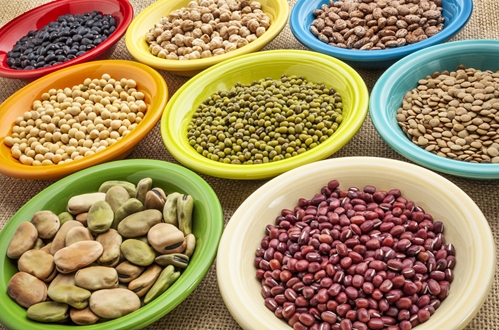Researchers Develop Global Warming-resistant Beans

![]()
Amidst fears that rising global temperatures would limit farmers' ability to grow beans in areas where these protein-rich foods are critical staples for the population, including many areas of Latin America and Africa, researchers have discovered new varieties of the legume that can survive in high heat environments.
New breeds of heat-resistant beans created
If global warming occurs at predicted rates, by 2050 the space that can grow current varieties of beans would decrease by half, according to CGIAR. To prepare for this temperature shift, CGIAR lead a team of researchers who set up experiments in Colombia. Both outdoors and in greenhouses, the scientists tested different varieties of beans at temperatures well above what is normal for bean growing at night.
They found 30 heat-tolerant varieties that can be grown in the worst-case scenario predicted temperatures. These beans can be grown at about 72 degrees, which is higher than the typical safe temperatures of 64 and 66.
About 400 million people rely on beans as a major food source that's rich in protein, fiber and other critical nutrients. These new beans make it possible for people to continue eating these beans for the future. CGIAR made these new varieties by combining popular modern bean varieties that you'd see in a grocery store, like pinto, black or kidney beans with the tepary bean, which is a bean that's good at surviving and has been grown in and around Mexico since before Columbus.
"Incredibly, the heat-tolerant beans we tested may be able to handle a worst-case scenario where the build-up of greenhouse gases causes the world to heat up by an average of 4 degrees Celsius (about 7.2 degrees Fahrenheit)," Steve Beebe, a senior CGIAR bean researcher, explained at a recent development conference in Addis Ababa, Ethiopia. "Even if they can only handle a 3 degree rise, that would still limit the bean production area lost to climate change to about five percent. And farmers could potentially make up for that by using these beans to expand their production of the crop in countries like Nicaragua and Malawi, where beans are essential to survival."
About two dozen countries contributed funding to the project, including the U.S., the U.K. and many other developed nations, as well as several organizations including the World bank, the International Development Research Centre, International Fund for Agricultural Development and the Bill & Melinda Gates Foundation.
Managing bean pests
While heat-tolerant beans may not seem necessary yet, the researchers suggest that Latin American countries should consider using these hybrids now. The tests showed that higher heat is already affecting these crops.
In addition to heat, bean farmers have to contend with many of the other pest animals, insects, fungi and plants that can affect bean production. North Carolina State University outlined just a few of the pests that can impact bean farmers in the U.S.
Aphids are dangerous to bean plants because they feed on the sap. This leads to discoloration and damage to the crop, although it may not directly kill the plant. In addition to bean aphids, cowpea, melon and potato aphids can also damage bean plants.
Other sap-sucking insects that can discolor and deform bean plants in the U.S. include corn earworm, stink bugs, corn borers, vine borers, seedcorn maggots and cornstalk borers.
Aside from sap-sucking bugs, bean plants can be damage by insects that mine the plant or eat the leaves. The bean leaf beetle, Mexican bean beetle and the vegetable leafminer are among the most dangerous insects for bean plants.
Clemson University pointed to some of the best pesticides for protecting beans. Bifenthrin, malathion, carbaryl and cyhalothrin are among the most effective chemical pesticides for preventing or treating infestations of aphids, leaf beetles, earworms, mites, grasshoppers and many other insects.
For over 38 years Greyhound Chromatography has been supplying high quality Chromatography consumables to laboratories around the world. Greyhound’s extensive range covers all areas of Environmental, Petrochemical, Food, Forensics, Chemical and Pharmaceutical analysis. Backed by a highly experienced technical services team, Greyhound is the preferred source amongst today’s analysts.
Greyhound Chromatography is pleased to supply Chem Service Certified Reference Standards to Research and Analysis laboratories worldwide.
The benefits of using Chem Service Certified Reference Standards:
High Quality: High purity chemicals for use as certified reference materials
Cost Effective: Products packaged in small quantities to minimize expenses
Wide Selection: 1,200 pesticide and metabolite reference standards (including banned and discontinued items)
Certification backed with experience: 50 years of experience. ISO 9001:2008 : ISO/IEC 17025:2005 certification :
ISO Guide 34:2009 For Organic Reference Material
CONTACT US
Tel: +44 (0) 151 649 4000
Email: marketing@greyhoundchrom.com
FOLLOW US
YOU MAY ALSO BE INTERESTED IN OUR NEWSLETTER















